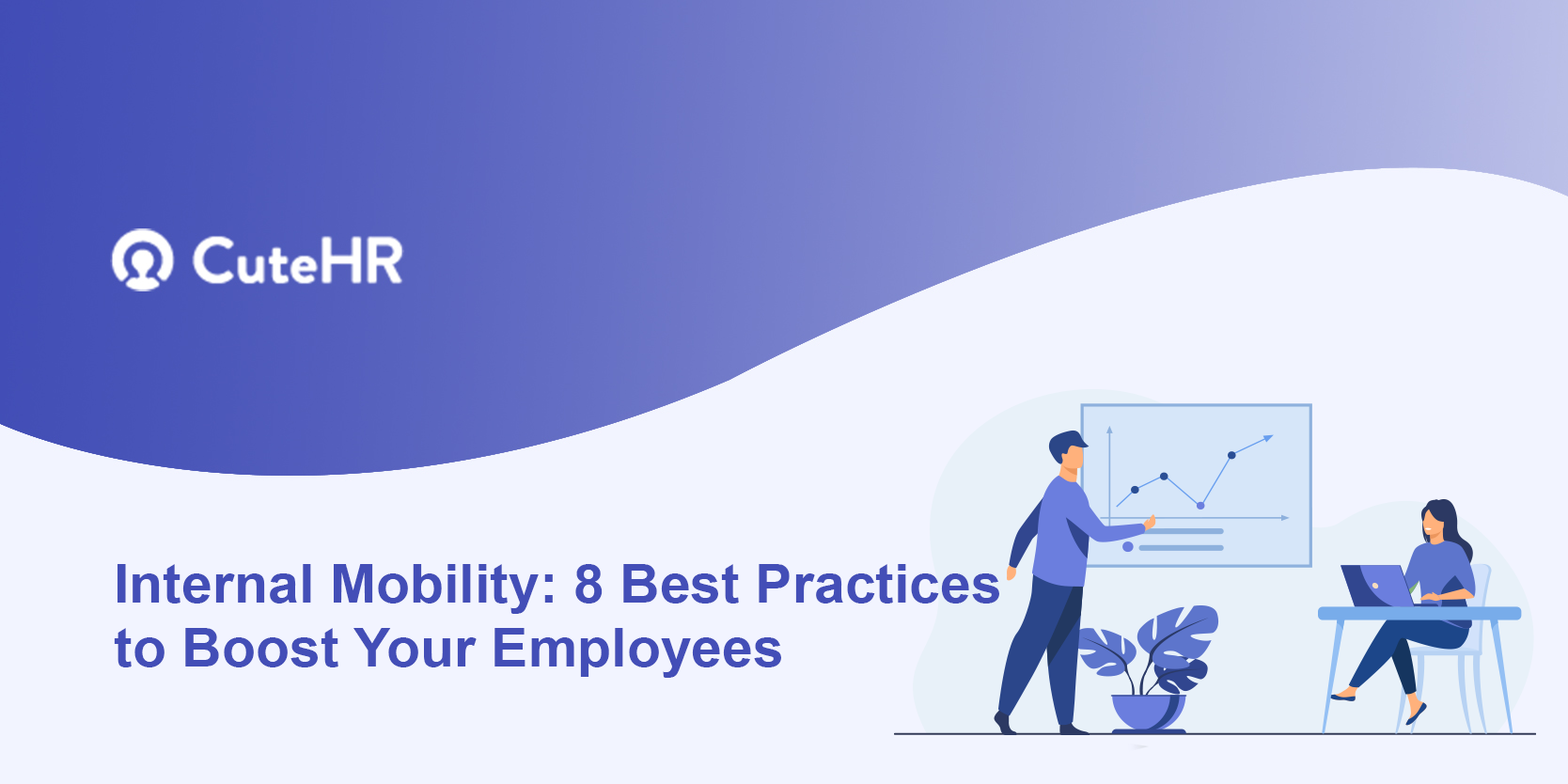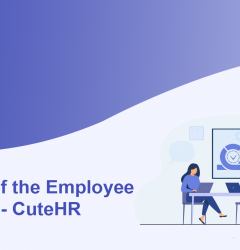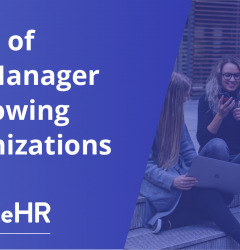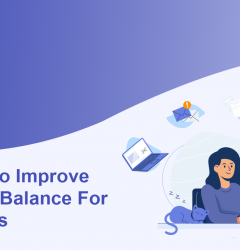19 May

Did you know? Nearly 60% of employees claim that switching jobs at their current employer is more difficult than finding a new one elsewhere.
Employee migration within a company is referred to as internal mobility. The internal mobility plan takes this a step further by providing a framework for lateral and vertical mobility of current employees.
The ability of an employee to keep up with the demands of the contemporary corporate landscape is also known as career agility. In some businesses, career agility and internal mobility are closely related.
You could be curious why internal mobility is becoming more and more popular or why employees are choosing to work for companies with internal mobility policies. Before answering these questions, we must first understand internal mobility and why it is vital to the achievement of both small and large organizations.
We’ll explore in-depth internal mobility in this blog and discuss how to create a strategy for it. For you to start utilizing your talent and skill sets, we’ll also discuss some internal mobility best practices. Let’s get going!
Table of Contents
What is Internal Mobility?
Definition of internal mobility: “It is often used interchangeably with internal mobility, career mobility, or talent mobility to describe talent movement between roles.”
For example, a lateral move would see a person change from one role to another with the same degree of seniority, but a vertical movement would see an employee rise from Vice President to President.
Although it can be tempting to bring in outside candidates to fill vacant positions or hire new staff, internal mobility offers more benefits than just job satisfaction. Likewise, it inspires current staff members to acquire new abilities, enhance old ones, and continue to be invested in their jobs and your organization. Internal mobility also puts managers and executive teams under pressure to guide coach, and support the people they are in charge of.
Why is Internal Mobility Important?
As you can see, both the company and the employees gain from internal mobility. Here are a few key advantages.
1. Improved Employee Retention
Employee engagement and productivity are positively impacted by internal mobility. One of the biggest reasons workers leave their employment and look for chances elsewhere is a lack of career advancement.
As a result, your team is far more likely to stick around if you can provide them with prospects for professional growth without forcing them to look for work and risking their employment.
2. Efficiencies and Savings
This is particularly true for positions that are in high demand or require a great deal of ability and experience. Furthermore, a study revealed that internal hires outperformed external hires in the first two years after promotion.
Internal mobility is the process of making the most of the talent you have and reducing the need for external recruiting. Posting job ads, sorting through dozens of applications and reviewing candidates are all time-consuming and expensive tasks, particularly if you already have limited resources.
3. Development of Skills
An effective internal mobility program gives staff members plenty of chances to reskill, upskill, and enhance their expertise and knowledge.
Everyone is honest about the fact that no one keeps the same job for longer than two years. This keeps workers interested, reduces stagnation, and helps prevent job-hopping.
4. Innovation Enabling
Internal mobility encourages ideas to move freely within the organization, which promotes more innovation.
A major element of career enrichment, this sort of talent mobility also offered the employees a rare opportunity for talent development.
5. Promoting Diversity and Inclusion in the Workplace
One of the best ways to promote and retain talent from within is to encourage a more diverse and inclusive workplace. By developing and upskilling existing talent, organizations can promote diversity at all levels of the company by facilitating internal mobility.
The most effective strategies for this are cross-training and mentoring. Those that have executive teams that are ethnically dissimilar in the top quartile are 36% more likely to achieve industry-leading profitability.
6. Recruiting New Talent
Aside from your current staff, developing a reputation as an organization that offers staff members multiple opportunities for growth and development will help you draw talented, ambitious people from other organizations that bring a growth mentality with them.
Types of Internal Mobility
1. Role-to-Role Mobility
Role-to-role mobility, also known as lateral mobility, is a type of work transformation in which employees switch jobs while maintaining a similar level of pay or responsibility.
An employee who has worked as a Sales Development Representative for five years might shift into a position as a Marketing Associate. This gives the worker a similar sense of power yet allows them to carry out completely different duties.
2. Project-based Mobility
Cross-functional teams are formed as part of project-based mobility to accomplish a common business objective or finish a particular one-off project. Each team member in these groups contributes a unique functional area of expertise as well as a different perspective to the table.
With project-based mobility, staff members can devote a portion of their time to projects outside of their regular departments and workflow. These can be working teams where each member is a part of both their functional department and the cross-functional team, or they can be the basic part of your organization.
3. Upward Mobility
Employee retention, engagement, morale, and productivity are all strongly influenced by upward mobility. The ability for workers to recognize the worth of their effort and experience is the most important benefit. Internal mobility is valued, and it can be shown that you value it by promoting it from within.
Internal Mobility Best Practices
1. Making Internal Mobility A Priority
The first step in developing an internal mobility process is to establish a culture of skill development and sharing across your organization. You are sending a strong message that you are invested in team members’ progress by fostering a culture of continuous learning where they can develop.
Your business will profit from fostering a culture where switching to a different position within the same organization is encouraged in addition to employee retention. Employees can grow into company mentors to assist other team members who are looking to enhance their skill sets in along with taking control of their career opportunities.
2. Assessing Your Team’s Skills
Do you know the skill sets of the 100, 1000, or even more employees who work for your company?
You can only genuinely have internal mobility if you are aware of each employee’s capabilities. You may keep track of the abilities each department possesses, and the skill gaps your business has by auditing each team member, ideally throughout the hiring process.
For example, you should keep a record of the fact that a new worker in your marketing division also has experience in public relations.
This not only saves you from hiring externally in the future if a position opens up on your public relations team and the new hire wants to fill it, but it also helps retain that team member by keeping them satisfied. Likewise, you can easily contact your employee to request aid if you need assistance with a PR assignment.
3. Developing Managers’ Capabilities
Your management team should take the lead in developing an internal mobility culture.
Your managers need to receive training on how to recognize ambitious workers and how to support and encourage them as they develop their careers.
Your management team should generally go out of their way to learn about the aspirations for career growth of their team and then look for ways to help them accomplish those ambitions internally.
Managers have a unique chance to promote business loyalty by identifying and supporting team members who have goals beyond the position they were hired for.
The manager can then direct the team member in the proper direction of internal training and learning opportunities if they can identify the team member who wishes to move up the career ladder. When internal vacancies arise, managers can eventually use these newly skilled employees to fulfill them.
4. Working on Cross-functional Projects
It is simpler for your team to work cross-functionally on projects if you conduct a skills audit as part of your hiring process.
Utilizing internal mobility involves more than just permanently transferring one team member from one department to another. As a result, your team is free to work together to strengthen a project. It also provides you the opportunity to employ those different sets of abilities.
Encourage your design team members to share their thoughts, for example, if they’ve expressed interest in a marketing project. Sharing ideas and promoting will be encouraged, and you’ll also showcase your willingness to relocate people around within and reshuffle talent.
5. Establishing An Internal Talent Marketplace
In order to find the best candidate for a position so, when one becomes vacant, we generally begin by using external recruitment strategies like job boards and social media.
But what if the ideal candidate is already employed by the firm?
The key to a successful internal mobility system is developing a mechanism to link people to internal opportunities. Starting throughout the hiring process, this process includes auditing the capabilities of future team members.
The department manager can then use the talent marketplace to search for anyone currently working for the organization whose abilities match a job opening or cross-collaboration opportunities.
6. Having A Structured Recruitment Process within the Organization
If you have a scheduled internal hiring process in place, encouraging mentorships and career development will only be beneficial to your organization. Without it, it’s challenging to evaluate capabilities, nurture talent, and link employees with new opportunities.
Setting up frequent meetings with your hiring staff and other departments is a good place to start. These conferences can be used to spot departmental needs and skill gaps before they become a problem. After all, if you don’t talk to them about these criteria, how will you know what they need?
After that, consider ways to inform current staff members of significant job opportunities within your organization. Do you think your career page is something they should look at? Do you have an intranet page where you list the roles you’re looking to fill? If they are interested in switching roles, how do they apply?
Having a file with each team member’s skill set is helpful, as we have already said. Whenever a job opening arises, you may then filter your present workforce. You can easily contact the internal candidate, if there is one, and ask whether they would be interested in taking on a new responsibility.
Think about how the internal hiring procedure will be different from the one used for external candidates. A culture fit assessment, for example, can be skipped if you already know the applicant fits the culture. A work assignment, however, is helpful to include because you still want to make sure they can succeed in the new role.
A systematic internal hiring process will not only help you fill open positions more quickly, but it will also give your staff greater confidence to develop their careers within the business because they will know what is waiting for them.
7. Implementing Mentorship And Coaching Programs
More than just a paycheck, employees expect more from their employers.
They desire to develop their careers and see a clear path for skill development. To ensure that you fulfill such demands, you should have policies and procedures in place.
The secret to nurturing talent is mentoring. Mentoring has a positive effect on employees that filters down to the entire organization. Programs like mentoring and coaching boost employee engagement, which then, in turn, makes workers feel appreciated and eventually benefits organizations in sustaining their most dedicated employees.
8. Make Succession Planning A Priority
Last but not least, create a succession plan, so you know exactly what will happen if an employee quits their job.
Although internal candidates are less likely to have the abilities of a CEO, they will have particular benefits over external candidates.
They will, for example, have a thorough awareness of the company’s culture, procedures, and, most importantly, relationships with other team members.
A clear path from the current employee to the replacement should exist for an internal succession plan to succeed in the role you’re filling. For example, the retiring employee should spend some time mentoring the team member who will take over their responsibilities, or your organization can sponsor an internal training program that will help them improve their abilities and get ready for their new position.
Either way, if you want to promote internal mobility at your organization, having a succession plan in place is necessary.
Internal Mobility Examples
The following examples illustrate internal mobility:-
1. Transfers Between Departments And Within Departments
An intradepartmental transfer refers to the transfer of a person within the same department. Account executive assistants, for example, change jobs to become sales development assistants.
2. Promotions
It’s standard procedure to select an internal candidate from your group when a higher-level position opens up, such as a team lead or manager.
One of the more prominent examples of internal mobility is climbing up the corporate ladder or executing a horizontal career transition, but there are many other, less prominent examples as well.
3. Swapping Jobs
Internal mobility often includes job swapping. In order to improve their skills and obtain a deeper understanding of the main duties of that specific position, two employees (from the same department or different ones) will swap places for a set period of time.
4. New Roles
The majority of expanding organizations, regardless of their size, frequently create new positions to meet the demands of clients. It is common for the most qualified and suitable employee to come from within the organization will be promoted to fill these new job opportunities.
The recruitment of a country manager from among the members of an existing team by a corporation that is entering a new market is an example of this.
5. Additional Projects
Employees can be assigned other projects in addition to their regular jobs. The purpose of this is sometimes to fill in for someone who is temporarily unavailable. Another reason is to help a worker grow in their career and improve their skills.
Wrapping It Up
Internal mobility includes much more than just hiring employees within the organization to fill vacant positions in a company.
Instead, a well-designed internal mobility program can assist you in improving the quality of hires, talent development, skill sharing, and employee retention. Internal mobility essentially focuses on developing a workplace that supports an inclusive company culture, promotes career advancement, and promotes team relationships through mentorship.
It can also assist you in handling evolving talent needs within your organization during a moment of uncertain business.
However, the staff you invest in will be the ones who triumph in this scenario.
They’ll not only be happy if you let them know you want to see them succeed in their careers and accomplish their goals, but they’ll also be more likely to stick with your organization for an extremely long period of time.
Frequently Asked Questions (FAQs)
1. Why Should Internal Mobility be A Major Component of Your Talent Strategy?
An internal mobility program can lower hiring costs, increase leadership development, and increase retention. The majority of talent acquisition (TA) professionals agree that retention is the main benefit of internal mobility, even though there are many potential benefits for both employees and their employers.
2. How can Internal Mobility be Improved?
Ways to improve talent mobility within the organization:-
- Create a formal strategy for internal mobility.
- Create innovative and approachable approaches.
- Ensure that you have the appropriate technologies.
- Invest highly in mentorship and training.
- Know the worth of institutional knowledge.
- Establish internal hiring targets.
- Encourage your staff to stay.













Himani